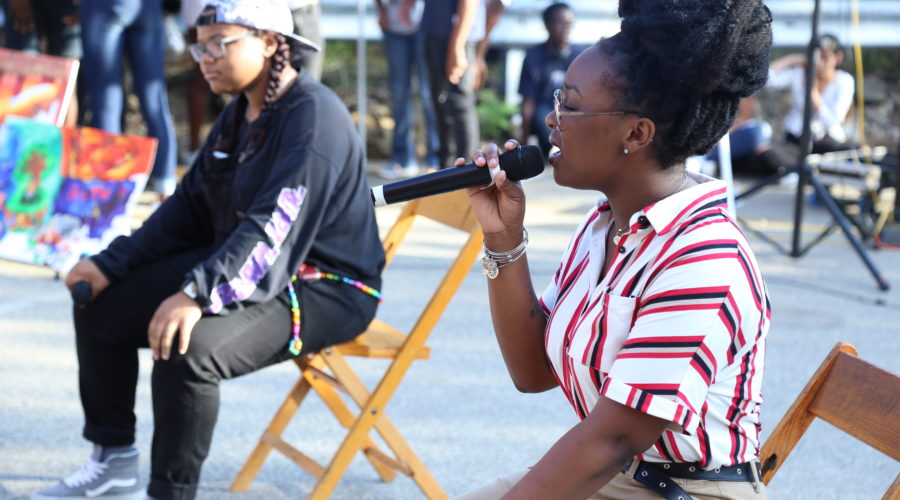Why a Black Teaching Artist program? Why now?
We promoted a search for our first Black Teaching Artist-in-Residence (BTAR) last fall, and by the December deadline received almost 20 applications for that one opportunity. It was difficult to deliberate over so many highly qualified applicants, but also gratifying to receive so much enthusiastic interest from a talented and thoughtful group of people. We are super excited to announce the results and inaugural plans for this program in February!
In the meantime, we spoke with Dr. Kendra Ross, UniSound Steering Committee member who, along with ACT3 Consulting Partners Denele Biggs and Tanika Harris, was a lead architect of the BTAR program. Here we share some of her thoughts on why this program is important, and why it’s important right now.
“Many of us have wanted to do the BTAR and similar programs for years. But now has become an important moment because we are still in a pandemic, both physically and culturally, and therefore, have been able to capture the attention of those who would help us make it happen.
“Representation [of Black people in teaching the arts] is important and the representation should be normalized. The “Black” pathway to the “arts” is not necessarily stereotypical and that’s okay. The path for Black and brown artists is often different than what people are led to believe is the “right” way to become an artist in any particular genre. Both teaching artists and the students they interact with need to see and embrace that.
“Classical music is a great example: we know that access to hearing or participating is already a challenge for Black and Brown kids, so them being able to imagine themselves in that space is critical. Interacting with a teaching artist that looks like them, and shares a story of love and passion for that music, opens up worlds. The only way we get there is by creating more opportunities like BTAR.”
Check out this New York Times article about how some classical music organizations are promoting Black artists.
“Equity is obviously important but also important is simply considering whether artists can even continue to do art in the current climate. We need to provide these opportunities wherever possible. I hope we were able to communicate through promoting the application – and now through implementing the program itself – that our intention is not to add to all the work these artists are doing already, but to lift up their expertise and use it to the benefit of the entire field. We want to say, ‘Keep doing what you’re doing!’ The ultimate goal is a mutually-beneficial relationship between the teaching artists, the students, and the organizations that are trying to support both groups.”
We are indebted to Dr. Ross and ACT3 for all the work that went into designing, promoting, and now launching the Black Teaching Artist-in-Residence (BTAR) program. If you want to be one of the first to get the BTAR announcement, be sure to sign up for our newsletter and like our Facebook page!







